This was published 6 months ago
Teals 2.0: ‘People are dying to express their dislike for the majors’
Inspired by 2022’s “teal wave”, community independent campaigns are afoot in previously safe conservative seats across the country. But will the movement gather momentum in a very different election cycle?
By Brook Turner
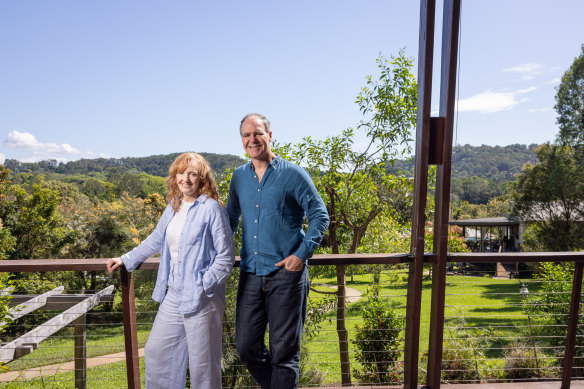
Gold Coast couple Leah Stacpoole and Malcolm Edgar were politically unaligned but concerned enough about the climate crisis to help set up a community-led tilt at the federal seat of McPherson. “We realised there was a real movement around Australia,” Stacpoole says.Credit: Paul Harris
“I’m sick of the parties; are they helping or has politics become a spectator sport? We face crucial decisions on housing, the economy, climate. We need evidence-based decisions and good decision-makers – and good decision-makers aren’t people who bark at women in parliament.”
Leah Stacpoole is retracing her path from political bystander on Sydney’s northern beaches to the Gold Coast, where she and her husband have founded a community independent campaign in the seat of McPherson – one of many such grassroots movements proliferating across the country in the lead-up to the next federal election. That path winds back before the notorious 2021 incident when Coalition senator David Van was accused of making dog noises while Jacqui Lambie was speaking, all the way back to December 2018, when the start-up with which Stacpoole and her husband of 25 years, Malcolm Edgar, had been involved, Avoka Technologies, was sold to banking software giant Temenos for $339 million.
Not that Edgar, Avoka’s chief technology officer, got anything like that. Enough, though, to pay off the mortgage and afford the couple options as they entered their 50s. “We thought, ‘Do we want to stay in Sydney or do we want to have a different kind of experience?’ ” Edgar says. “Sydney was such an expensive, competitive place even then. If we’d stayed, I’d have had to go back to work and the kids would have been on that Sydney fast-track: go to a good university, get a great-paying job, work incredibly hard and don’t stuff up or you get voted off the island.”
The couple toyed with taking their daughter, Mia, and son, Sam, then 13 and 10, overseas, before deciding how they lived needed to change as much as where. “We wanted the kids to learn how to live more sustainably,” Stacpoole says of their move to the Currumbin Valley eco-village, established on an old dairy farm on the Gold Coast in the noughties. For both, it was a return as much as a departure. Stacpoole hails from a rural Victorian military family; Edgar from six generations of West Australian pastoralists, including Liberal senator Malcolm Fox Scott, who helped kick-start the WA mining industry in the 1970s. His horticulture degree had detoured into environmental science, an early job with the Department of Agriculture into technology. Politically unaligned, the couple had always been concerned about climate. That concern had turned to alarm, however, on the way to their new home in 2019. “We were driving through smoke, with fires on either side of the road,” Edgar recalls. “It was horrific; the whole east coast seemed to be alight.” Black Summer segued into COVID-19, the 2022 floods and the Christmas 2023 Gold Coast storms.
There had been other, earlier auguries, too. As they prepared to up sticks, Zali Steggall’s 2019 independent campaign had played out in Manly, where Avoka was headquartered. The couple had watched it with interest rather than hope, presuming her win reflected Tony Abbott’s unpopularity rather than anything broader. When indies prevailed in neighbouring electorates in 2022, however, including their former seat of Mackellar, resignation turned into “active hope”, as Stacpoole recalls. “We’d done all the protests; we were just living our good life, thinking you couldn’t have an effect, and suddenly we realised there was a real movement around Australia.”
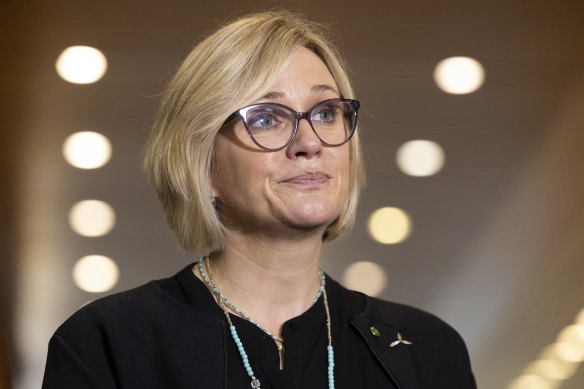
Teal independent MP for Warringah, Zali Steggall.Credit: The Sydney Morning Herald
She hunted for a local community group. Finding none, she founded McPherson Matters in 2023 with another local, Judy McLennan, “a bit of an experiment” to see if people were willing to talk politics in an area where the topic had traditionally been avoided. Forty-nine kitchen table conversations with 250 locals later, in February Edgar, Stacpoole and former Green Cross Australia boss Mara Bún founded McPherson Independent to look for a candidate.
It’s a shiny little campaign vehicle. Regular events since April have yielded pledges north of $50,000 and a volunteer database of more than 600. At the time of writing, McPherson Independent was finalising its selection of a candidate for a seat that’s changing at warp speed. A hot spot for post-COVID immigration from Sydney and Melbourne, it averages 800 new voters a month, which has lowered the median age to 50 and driven house prices through the roof. They include Climate 200 CEO Byron Fay and his wife, author Briony Benjamin, who grew up in the area and, along with independent ACT senator David Pocock, officially launched McPherson Independent in May.
Early Climate 200 polling had suggested the Liberal National Party primary vote in the area had fallen to 40 per cent, well within the 38-43 per cent range secured by teals who won seats in the 2022 election. Nor are they alone in thinking the safe Liberal seat – so safe that Peter Dutton tried to parachute into it when his seat of Dickson to the north seemed under threat in 2009 – is winnable. Federal minister for employment and workplace relations, Murray Watt, a Queenslander, recently singled it out as the most likely to turn teal, given the combination of it being in a “more progressive” part of the Gold Coast and having “an outgoing, long-term and well-liked member”, Karen Andrews – the Liberal who beat Dutton in 2009, and who announced last year that she’d retire at the upcoming election.
As for the incumbent: “I always knew the biggest risk in a so-called safe seat was a high-profile independent,” Andrews tells Good Weekend. “We wouldn’t have thought we would lose the [rural Victorian] seat of Indi over a decade ago. But Cathy McGowan won it [in 2013] and retained it and Helen Haines has since won it and retained it. It shows two things: that a safe, conservative seat can be taken by a high-profile independent who’s prepared to put in the hard yards and represent the community, and that it is difficult to remove them once it happens.”
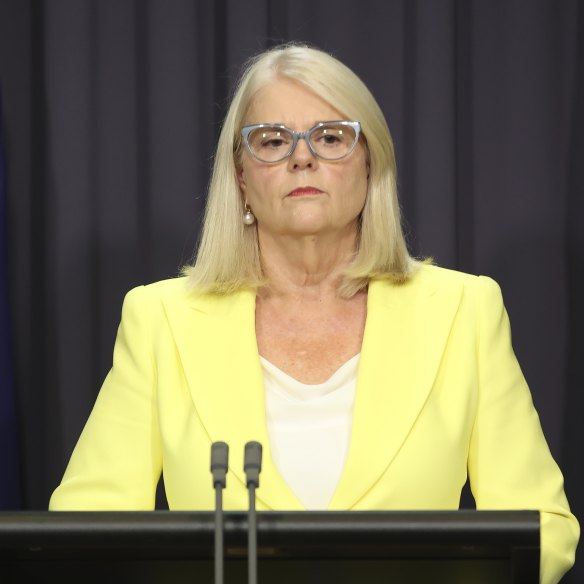
Karen Andrews’ impending retirement in McPherson has motivated independent campaigners.Credit: Sydney Morning Herald
No independent ran on Queensland’s eastern seaboard at the last federal election. At least, none of the community kind that prevailed further south, something many saw as a missed opportunity given the teal wave that washed over Liberal heartland seats in Sydney, Melbourne and Perth, and the Greens one that washed over Brisbane city seats. This time around, however, groups have sprouted up along the coast, from Moncrieff and Fadden to McPherson’s north, to Dickson in Brisbane’s north-western suburbs – held by Peter Dutton on a margin of just 1.7 per cent – and Fisher and Fairfax on the Sunshine Coast. Some, like the one in Fadden, are still testing the coastal waters to see whether an appetite exists. Some, like Fairfax Matters – where organisers hope shadow climate change and energy minister Ted O’Brien may be vulnerable as Dutton’s local pro-nuclear proxy, despite a 9 per cent margin – have just started their candidate search. Others, like Dickson Decides, formed two months ago, are already beginning to finalise their shortlist.
In Western Australia, Kate Chaney’s 2022 campaign in Julie Bishop’s formerly blue-ribbon seat of Curtin has inspired efforts in the neighbouring seats of Moore and Fremantle, as well as in Forrest, which takes in Margaret River and where another long-time Liberal incumbent, Nola Marino, is retiring. Groups have also sprouted in the state seats of Cottesloe, Nedlands and Churchlands ahead of the WA election next March, all but the first targeting sitting Labor members.
“There’s a community-independent halo for sure,” volunteer Lily Jovic, 32, says of Voices for Fremantle, which is focusing on the looming state election first, in a seat where the Greens reduced Labor’s 23 per cent margin to 15.7 per cent in 2021. A Fremantle pub event with Kate Chaney in July drew a capacity crowd that included former WA Labor premier Alan Carpenter and Professor Fiona Stanley. “It’s a safe seat on paper but it was clear people were feeling over it, not listened to, not seen, incredibly taken for granted, which speaks to the need for a community voice in parliament,” Jovic says.
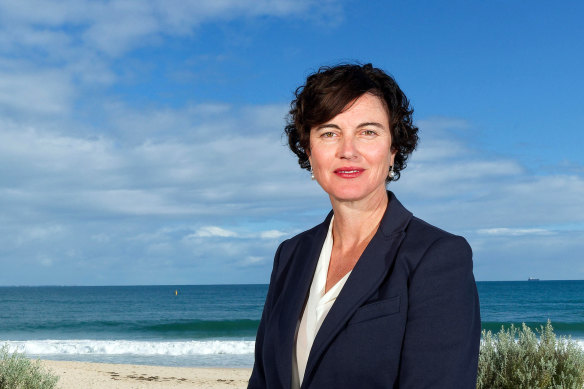
Kate Chaney’s win in Curtin inspired independent hopefuls in neighbouring electorates.Credit: Trevor Collens
Of course, the unknowns exceed the knowns this far out from the next federal election, not least the timing. A date this year would be too soon for many nascent campaigns. State contests in WA in March and in Queensland next week – both against long-term Labor governments – are likely to shift the federal calculus. And however many community groups proliferate, not all will launch campaigns, still less find the sort of rock-star candidate who makes it viable. Even if they do, “running isn’t winning”, says Tina Jackson, co-founder and executive director of the Community Independents Project, founded by veterans of the Indi and Warringah campaigns in 2021 to foster the movement.
One thing is certain, however. Almost a third of the nation did not vote for major parties at the last federal election – a new record – with the Coalition’s primary vote slumping to 35.7 per cent, Labor’s to 32.6 per cent. And public disaffection has only grown since, says RedBridge pollster and former Labor strategist Kos Samaras. “We’ve never seen such levels. Focus groups are telling us people are really, really pissed off at established politics and the major parties,” he says. “Think 2022, then put it on steroids. People think the political class don’t care about them, the system’s stuffed, and it’s not going to be fixed.”
The upshot is voters are more eager than ever to disrupt the status quo, Samaras says, citing the March Tasmanian state election that resulted in a hung parliament. “Both major parties went out there in the last week and said, ‘Vote for us because you don’t want instability’ … and of course the crossbench now is bigger than the opposition.” He is eyeing a similar result federally. “If the teals and other independents come out and say, ‘The two major parties are trying to basically dominate the landscape; vote independent to ensure you’re sending a strong message’, their vote will increase,” he says. “People are dying to express their dislike for the two majors as much as possible.”
My first encounter with the new groups looking to replicate the wave that broke in city seats in 2022 came in February. As author of a book on the 2022 campaigns, Independents’ Day, I’d been invited by McPherson Independent to be part of a Q&A. The 90‑plus well-heeled guests at what was effectively the group’s soft launch in a cool bar in the Gold Coast suburb of Varsity Lakes included representatives from campaigns from Moncrieff to Fadden. And what was striking, as they discussed revolution over cocktails and canapés, was the sense of déjà vu: the sudden glimpse of countless feet paddling furiously beneath the surface; of a roiling energy that had not begun to be seen or felt more broadly.
Just how many feet soon became clear. About 300 people from 80 electorates attended the Community Independent Project’s first online convention in February 2021, six times the number expected. The latest iteration in June pulled more than 1000 from 125 of 151 federal electorates, with 50 groups estimated to be working around the country, ranging from fledgling “Voices of” groups to well-advanced campaign vehicles. Which was the other striking thing at the February event: how game-ready McPherson felt compared with the campaigns I’d observed in the lead-up to the last election, and the new and very different territories into which those groups were pushing, beyond the wealthy urban seats with which the so-called teal phenomenon had been synonymous.
The last election didn’t just put six new independents on the federal parliament’s largest-ever crossbench. It created a whole new cohort who know how to seed, fund, run and win campaigns, and are now busy evolving the model to meet new contingencies. Candidates such as Jacqui Scruby, who managed Sophie Scamps’ dark-horse 2022 campaign in Mackellar, lost Pittwater (the NSW state seat that sits within Mackellar) in 2023 and is running again in this weekend’s Pittwater by-election after the man who beat her by 606 votes, Rory Amon, had to stand aside.
Or the WA campaigns not just inspired but schooled by those who worked on Kate Chaney’s lightning-fast Curtin 2022 tilt, such as lawyer and Curtin Independent founder Tony Fairweather, another speaker at the July politics-in-the-pub event in Fremantle. Or Watershed, a new communication, data and strategy company set up earlier this year along the lines of Populares, which advised a number of 2022 campaigns. Then there’s the philanthropically funded not-for-profit Huddle, set up by political science professor Ann Capling – who ran Monique Ryan’s 2022 Kooyong campaign – and Cam Klose, who worked on Cathy McGowan’s campaigns and helped set up Kooyong.
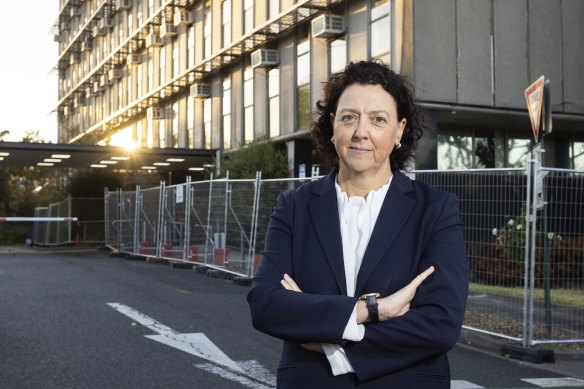
Teal independent Monique Ryan beat then federal treasurer Josh Frydenberg at the last election for the seat of Kooyong.Credit: Paul Jeffers
Klose reviewed the community-independent field after the last election with a grant from Climate 200. “I spoke to almost every winning and losing campaign and tried to figure out what it was that made the difference,” the 35-year-old says. “It wasn’t that difficult to see that the campaigns with the most capacity financially, but also really strong, trained campaign managers, were the campaigns that won.” Set up a year ago, Huddle is working with 35 groups – 25 of them intensively – on everything from strategy and training to database management. “It was so good to see what happened at the last election, but my interest is really on a lot of these rural and regional seats and the Nationals,” he says.
And thereby hangs a large chunk of the Independents 2.0 story. The first iteration harnessed local support in community-minded rural Victoria more than a decade ago. In 2019, it came to the city via Steggall’s highly professional, climate-focused campaign, the template for the campaigns across six city electorates in 2022, backed by Climate 200, which Simon Holmes à Court launched just before the 2019 election and which came of age three years later. Now, much of the impetus is focused on marrying and evolving those country and city precedents. Like the Regional Voices Fund, a fledgling Climate 200 equivalent for regional and rural campaigns quietly established by veterans of country campaigns from Indi to nearby Nicholls, which local businessman Rob Priestly almost won in 2022. The Nicholls campaign was so well supported by local business that it didn’t need backing from Climate 200, whose environmental focus was seen as potentially problematic in rural seats.
Chaired by fourth-generation farmer and former NSW Rural Woman of the Year Dr Lorraine Gordon, who farms beef and carbon at Ebo on the NSW New England Tablelands, the Regional Voices Fund’s other director is lawyer Helen McGowan, Cathy’s sister. Incorporated in March, it is hoping to raise $2 million to make the same sort of difference to “rural, regional and remote” campaigns that Climate 200 – a third of whose donors came from rural seats – did for city campaigns in 2022.
Gordon won’t say how much has been raised, other than “we have funding and there’s a lot more promised”, nor what seats it has in its sights. “We have a list, let’s just say that. There’s a solid group of candidates, many of whom are within 2 or 3 per cent of a shift, and we are there to help them to really boost their campaigns.” An expert in regenerative farming, Gordon says she cancelled her membership of the National Party years ago. “It’s no longer a party of food and fibre, it’s a party of coal and gas,” she says. “It’s not a rural or regional voice, which is why we are seeing the rise of the independents.”
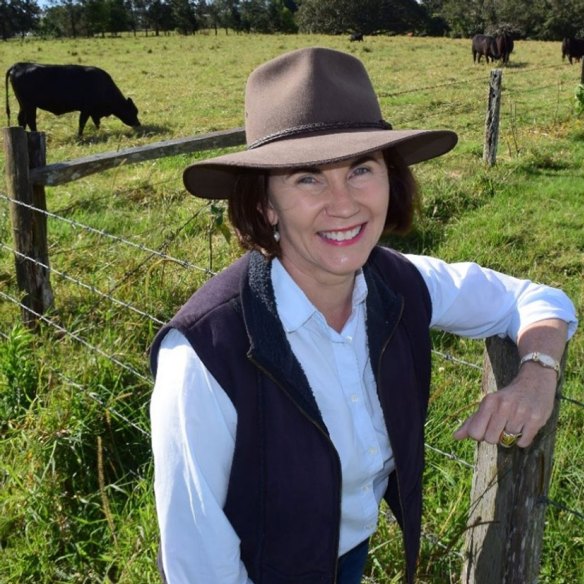
Dr Lorraine Gordon, chair of the Regional Voices Fund.
Nicholls, where Priestly managed a primary vote of 25.5 per cent against National Sam Birrell’s 26.2 per cent, is one obvious potential target, though Priestly is understood to have decided not to run after an ugly 2022 campaign that included attacks on his family and claims he was endorsed by then Victorian premier Dan Andrews. Funders are also keeping an eye on the western Gippsland seat of Monash, held by Russell Broadbent, who quit the Liberal Party last year after losing pre-selection and moved to the crossbench.
Then there are the two seats that recent Accent/RedBridge polling highlighted as being in play. Former Triple J presenter Alex Dyson almost doubled his primary vote on his second tilt at Malcolm Fraser’s old seat of Wannon in Victoria’s western district in 2022, ending at 46 per cent to Liberal Dan Tehan’s 54 per cent. Indeed, the PM taunted Tehan in parliament that he needed to get door-knocking after the 36-year-old renominated in August. “It’s super within reach,” Dyson tells Good Weekend. “But it took 10 times the work, energy and money to only double the result last time, and it’ll take 10 times that to just get the final 5 per cent.”
In the NSW mid-north-coast seat of Cowper – which spans Coffs Harbour and Port Macquarie to Kempsey and Ebo – Caz Heise recently quit her “dream job” as regional head of nursing and midwifery at the Coffs Harbour Health Campus to run again, emboldened by her successful battle with stage-four cancer a few years back. “Nearly dying gives you a really good understanding that life’s very short and you’ve got to do what you’ve got to do,” she says. “What I’m doing is the biggest protest of my life: about the fact that the party system in Australia, the system we’re working in, is quite broken.”
Heise managed almost 48 per cent of the two-candidate preferred vote in a seat once held by Country Party founder Earle Page, cutting the National’s margin from almost 12 per cent to just over 2 per cent. Cowper is another seat in demographic flux after post-COVID immigration, typifying the way city and country streams are mixing. Heise will not only take Climate 200 funding, as she did last time, but is also consulting the teals’ marketing guru, Dof Dickinson, on refreshing the brand. “Obviously we have to get the messaging contemporary … some of the main issues, like the cost of living and the housing crisis, are different to last time. So our messaging will be focused on that.”
The question in the wake of 2022’s teal wave was whether it reflected a movement or a moment.
Then there’s Groom in Queensland’s Darling Downs, where former social worker Suzie Holt came close to turning the seat marginal after a relentless, if thinly resourced, charm offensive. Holt ran fourth on primary vote in Queensland’s only 2022 community campaign but second overall. “She convinced people to give her their preferences even though she was new and even if they had made their minds up for Labor or One Nation or United Australia Party,” says Josh Addison, a Holt volunteer who cut his teeth volunteering on Jacqui Lambie’s 2019 Senate comeback campaign.
“Suzie has not stepped back since the election. She’s been to Canberra to talk to Helen Haines about her regional housing bill, had David Pocock up for a soil symposium with 100 farmers. There’s just an energy in the electorate. She’s smart and she’s quirky and, like Jacqui, the fact that her competitors underestimate her is one of her biggest strengths.”
The question in the wake of 2022’s teal wave was whether it reflected a movement or a moment: an unholy alignment of Scott Morrison and issues of climate and misogyny, turbocharged by the novel accelerant of Climate 200 funding. It was a variation on the question that has met each independent victory: whether Cathy McGowan’s slim 2013 Indi win by 431 votes was actually about the polarising Liberal member Sophie Mirabella; whether Zali Steggall’s resounding 2019 Warringah victory was really about Tony Abbott.
Of course, Steggall increased her margin in 2022 from 7 to 11 per cent; McGowan was not only returned but handed the seat to Helen Haines, who re-won it in 2019 and increased her margin in 2022. Nevertheless, the scale of 2022’s teal wave means the broader movement is now largely judged by the fortunes of the seven professional women holding city seats. In August, a front-page article in The Saturday Paper said “polling from multiple sources” showed the teals were at risk of losing Goldstein, Kooyong, Mackellar and Curtin, in addition to North Sydney, where the seat held by Kylea Tink was abolished in last month’s redistribution. More recently, the same Accent/RedBridge polling said that Cowper and Wannon were in play but Goldstein and Curtin were at risk.
Those most invested in indie campaigns say rumours of their demise are greatly exaggerated, though they concede it will be hard work and nothing can be taken for granted. Kirsty Gold, another key figure from Steggall’s team, is wagering that the class of 2022 will all be re-elected “plus three or four others”.
Within the Canberra bubble, views break along predictable lines. To the Coalition’s point woman on the teals, Sussan Ley, the new breed functions as an “opposition to the opposition and let the government off the hook. They claim to be a community movement but they’ve been bought and paid for by vested interests, by big money.” Ley estimates she’s visited the six formerly blue-ribbon seats almost 30 times since the last election. “They’ve brought big money into Australian politics.”
As for Labor: “[The teals] have contributed marginally to a better tone in parliament, in that they come into the parliament and talk about serious issues in serious ways,” one government insider concedes. More telling, however, was the PM’s decision to reduce the independents’ advisory staff from four to one shortly after taking office. And recent, almost Freudian comments about the centrality of the two-party system from senior Albanese minister Don Farrell, who is poised to reveal the biggest shake-up of electoral rules in a generation aimed at limiting big-money donations.
“They’re really impressive operators,” says Andrew Wilkie, who characterises himself as part of a previous generation of independents. “They honestly give me imposter syndrome. They work twice as hard as me, they’re twice as smart and they’re twice as active in the parliament.” ABC journalist Annabel Crabb, too, recently noted the “profound effect” the teals had had on parliament. “Watching a group of independent MPs prosecute locally relevant issues on behalf of their electorates causes a certain degree of chafing among major-party MPs, who are regularly obliged to suck up binding party policies that are unpopular in their own constituencies,” she wrote, citing Fatima Payman’s defection from the Labor Party to the crossbench as one example.
But an appetite to disrupt, as Kos Samaras notes, doesn’t necessarily mean voters will vote for the same disruption as last time. Samaras’ variegated crossbench might include representatives of Payman’s new party, Australia’s Voice, or the Western Sydney Community Party that Dai Le – another independent elected in 2022 – recently formed to get candidates from Western Sydney into future federal elections. Many are positioning to catch crumbs from the two-party table. Even those closest to the community-campaign coalface for the longest are philosophical.
“I don’t know,” Cam Klose says when asked the movement-versus-moment question. “I don’t think enough of us fully learnt the lessons of Indi in 2013 until the 2016 election, or of 2016 until 2019. You keep recontextualising the moment and what was achieved. I genuinely think it’s too early to tell. We might win, net, two more seats – we might lose seats – what does that do to momentum and belief? The energy and the desire are there across the country for a different style of politics. And the voting patterns have been reflected poll after poll. But whether it’s an independence movement or whether it’s a new party or whether the major parties figure out a way to be more enticing to the electorate, there are so many open questions. I grapple with it all the time and I have no answers.”
No one sees just how speculative the future has become as clearly as Kylea Tink, now that she’s been forced to lift her eyes to it. Tink hasn’t officially ruled out running in Bradfield, the electorate she now lives in post-redistribution, and which fellow 2022 candidate Nicolette Boele turned marginal after a short, scrappy 16-week campaign. Such a move seems unlikely though, given Boele’s name recognition and strong gains of above 43 per cent even before a contest starts.
Rather than the teal jelly-wrestle many would relish, Tink is looking to evolve a movement, the effectiveness of which she doesn’t for a second doubt. “Somebody asked me whether I thought the seats of Bradfield or Bennelong were actually winnable by an independent. And my response was, ‘There are 151 seats in the House of Reps at the moment and 151 seats are winnable,’ ” she says. “There’s that sort of sensible centre at the moment that’s missing in our political frame and I would like to see that rebuilt …
“I don’t have a clear line of sight yet on how that is rebuilt: as an alliance of community independents mobilising together, or whether you have to play the game and potentially establish a new party. But there is a gaping hole in our political system and if the Liberals aren’t able to move themselves back towards covering that, then I think there is an opportunity there to do something bigger in the next decade.”
To read more from Good Weekend magazine, visit our page at The Sydney Morning Herald, The Age and Brisbane Times.